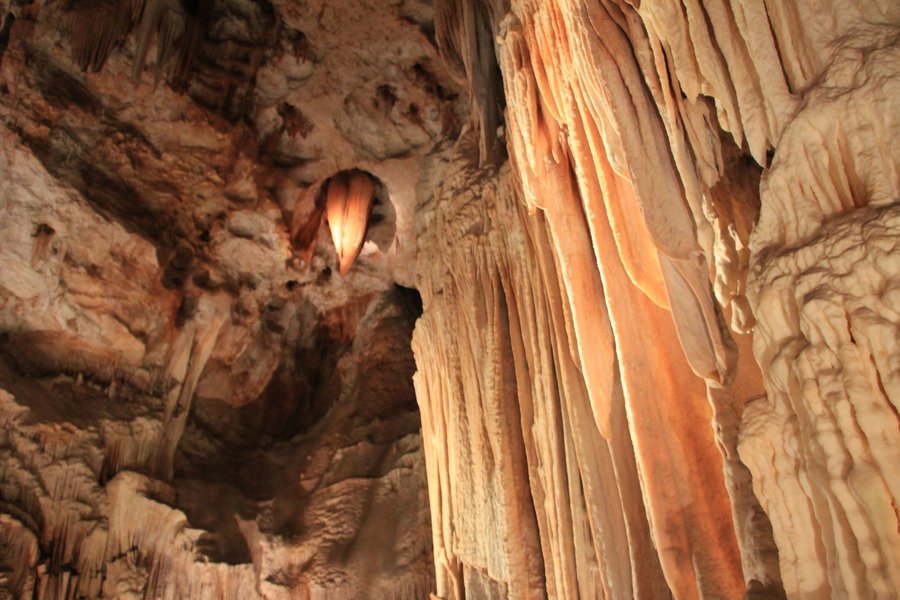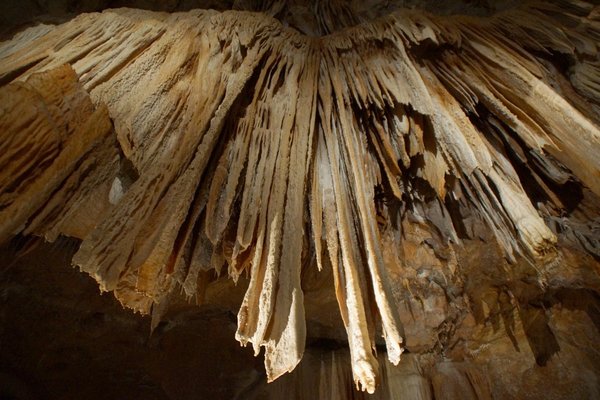France
Ensemble de grottes à concrétions Sud de la France
The Ensemble de grottes à concrétions du Sud de la France is a serial property of 18 caves and cave groups in the Pyrenees, the Massif Central and the Alps.
The caves are characterized by the presence of speleothems in a variety of morphologies and crystal forms. Stalactites and stalagmites are the best-known of these. Among the caves, the Aven d'Orgnac and the Aven Armand (located within the WHS Causses and Cévennes) are the best known.
Site Info
Official Information
- Full Name
- Ensemble de grottes à concrétions du Sud de la France (ID: 1429)
- Country
- France
- Status
-
On tentative list 2000
Site history
History of Ensemble de grottes à concrétions Sud de la France
- 2007: Requested by State Party to not be examined
- .
- 2001: Requested by State Party to not be examined
- At Bureau Session
- 2000: Added to Tentative List
- Added to tentative list
- Type
- Natural
- Criteria
Links
- UNESCO
- whc.unesco.org
- Official
-
- frenchcaves.com — French Caves
All Links
UNESCO.org
- whc.unesco.org — whc.unesco.org
Official Website
- frenchcaves.com — French Caves
Community Information
- Community Category
- Natural landscape: Karst landscapes and caves
Travel Information
Recent Connections
News
No news.
Recent Visitors
Visitors of Ensemble de grottes à concrétions Sud de la France
- Aitia
- Argo
- Christoph
- Daniela Hohmann
- Daniel Chazad
- David Aaronson
- Erik Jelinek
- Francky D'Hoop
- Gilles
- Hasco
- Hubert
- Jakob F.
- Janina Lehmann
- Jasam
- Javier Coro
- jonathanfr
- JoStof
- MaxHeAnouBen
- MoPython
- Philipp Peterer
- Ralf Regele
- Roger Ourset
- Roman Bruehwiler
- Solivagant
- Szucs Tamas
- Tim Allen
- Truls Brekke
- voyager
- WILLIAM RICH
Community Reviews
Show full reviewsRalf Regele
Ensemble de grottes à concrétions Sud de la France
Ensemble de grottes à concrétions Sud de la France (On tentative list)

On the way towards the Mont Perdu WHS from the french side, I made a visit to the "Gouffre D'Esparros" cave, which is part of the obscure TWHS "Ensemble de grottes a concretions du Sud de la France". The cave is a bit in the middle of nowhere. However, the GPS should find it, the roads are fine and the infrastructure for the visit is actually pretty good. Despite visiting on a long weekend with nice weather, I was the only visitor for the early tour, so I had my own private tour guide. The cave itself is quite nice (but I have a soft side for caves). Although the cave has a rather vertical layout, the tour path itself was completely horizontal and easy to walk. The stalagmites were nice but not too numerous. The highlight of the cave is the finely preserved frostwork - a crystal-like outgrowth that covers many walls and rocks. A downside of the visit was that photography is totally forbidden for non-obvious reasons.So, while the visit itself was quite nice and by all means recommendable, the nomination as a TWHS is in a poor state. The caves seem to be put together without any clear reason or idea. There is practically no description or justification given at the UNESCO site. And caves are quite common in the world - almost every country has a few, and quite a lot are already WHS sites. So it is completely unclear what is so special about the …
Keep reading 0 comments
